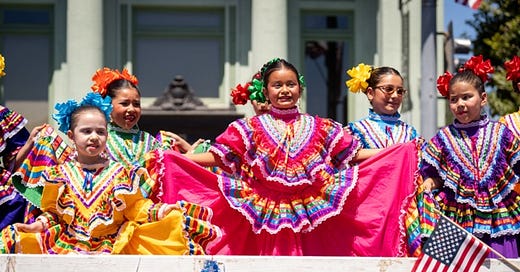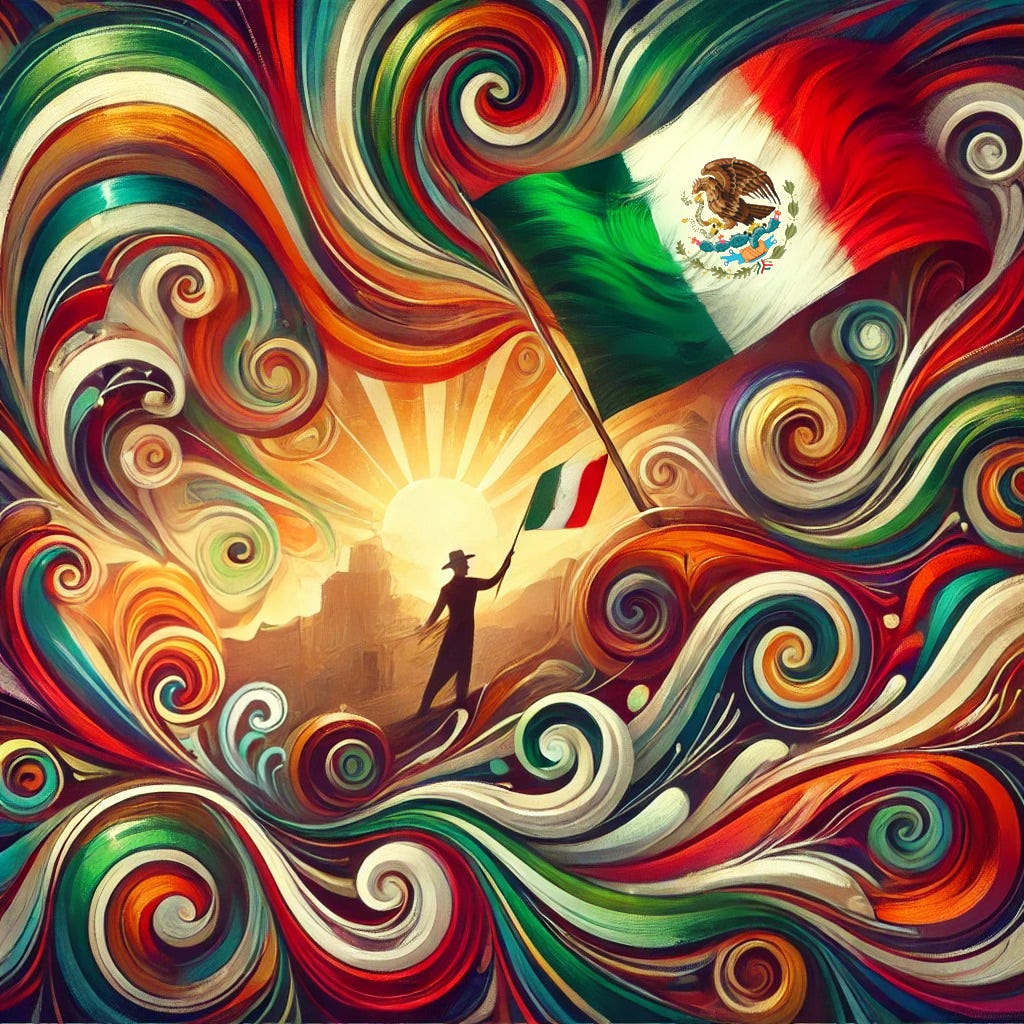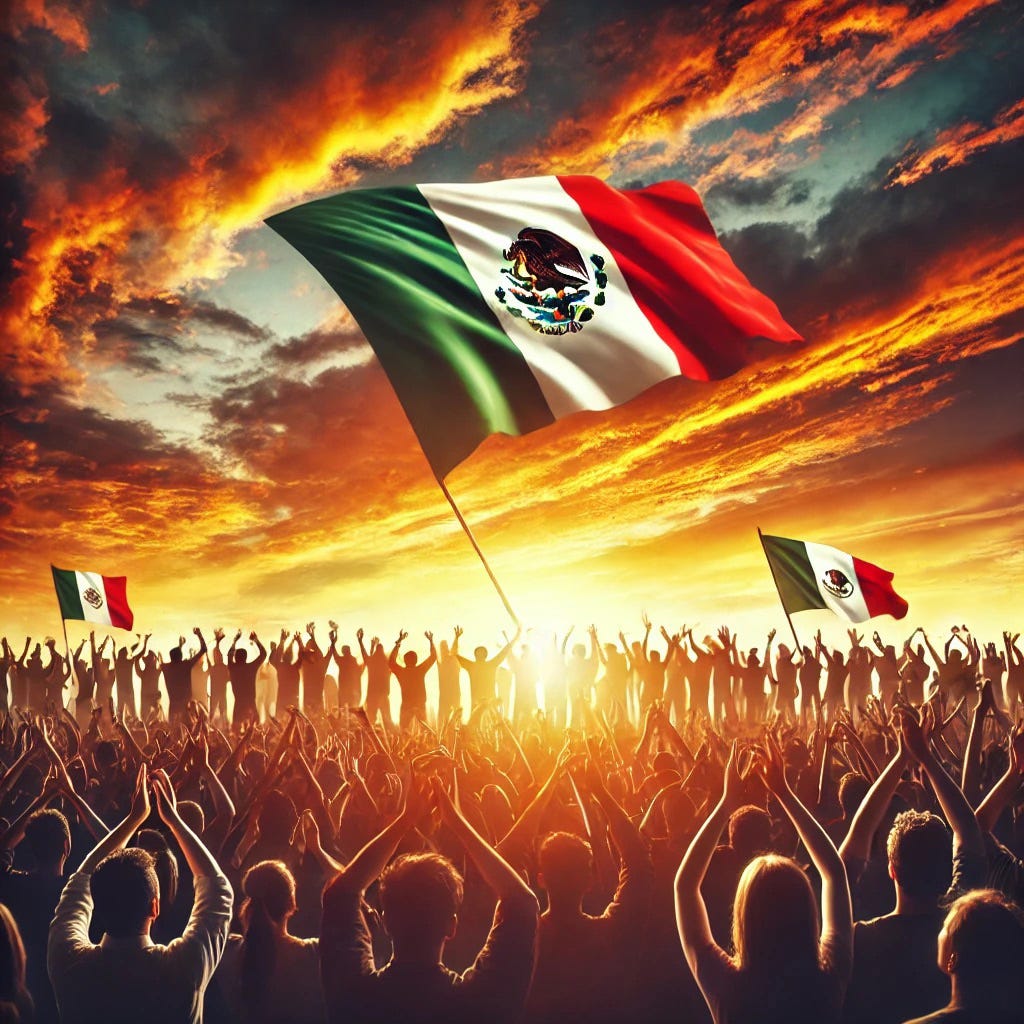NAPA VALLEY, Calif. — My grandfather was a storyteller, and when I was young, he told me that on my birthday, everyone in Mexico celebrated with fiestas, parades and bellringing. I thought that was quite impressive of Mexico.
When I was older, I learned that the reason for the parties is that today, Sept. 16, is Mexico’s Independence Day, commemorating the country’s long quest for freedom. On Sept. 16, 1810, a Mexican a priest, Miguel Hidalgo y Costilla, delivered the “Grito de Dolores,” a fiery speech that launched an 11-year struggle to end Spanish colonial rule after more than 300 years.
They succeeded, and yet it would be another century of battles and power struggles between liberal and conservative forces to establish a republic. Augstín de Iturbide, who declared himself emperor, was shot after less than a year. He was succeeded by President Antonio López de Santa Anna, who was forced to sell part or all of present-day Arizona, Colorado, Nevada, Utah, Texas, New Mexico and California to the U.S. and then went into exile.
On Mexican Independence Day, it’s my grandfather I remember most, and his stories of a country that he loved and taught me to love as well.
In 1858, Benito Juárez, a lawyer and the son of Zapotec descendants from Oaxaca, became president. But when, in 1861, he decided that Mexico could not pay back debts to Spain, England and France, France decided to seize the opportunity to impose a monarchy in Mexico.
On May 5, 1862, the majority of the Mexican people united against the French and defeated them in the Batalla de Puebla, now celebrated as the Cinco de Mayo.
Nonetheless, with the support of Napoleon III, Archduke Maximilian of Habsburg, younger brother of Emperor Franz-Joseph of Austria, was proclaimed Emperor of Mexico. Apparently unable to understand that he was an outsider, he lasted three years before he was executed.
Juárez restored the republic and governed until his death in 1872. He was followed Porfirio Díaz, who ruled as a dictator from 1876 to 1909.
The Establishment of a Constitutional Republic
My grandfather, Augustín Córdoba, was born in Mexico, his grandfather having arrived with the ill-fated Maximillian. He, however, prospered by marrying a Mexican woman, whose family owned considerable property in Sonora.
He enthralled us with his stories of growing up on a cattle ranch. One of my favorites was this: A boy, he preferred to hang out with the Yaqui men who worked on their ranch, and from them learned their language. When the revolution began to rumble, the governor summoned him to the palace in Hermosillo and asked if it was true that he could speak Yaqui. The governor proposed to send him as his emissary to speak to a group of men who had seized a train station and confiscated a cache of weapons. He would have a bodyguard, the governor promised.
My grandfather described arriving amongst the restive, angry group, walking past rows of men holding rifles.
“My soldier kept saying, ‘Mr. Córdoba, I believe they are going to kill us.’ ‘No,’ I said. ‘The governor has asked me to do this. We will be fine.’”
So, he met the leader, drank a little whiskey, discussed problems, and went back to report to the governor.
“Córdoba,” the governor greeted. “You’re back. I was sure they’d kill you.”
My grandfather told this as a cautionary tale about politics.
It was, however, his involvement that caused his family to dispatch him to America in 1910. He was 20 years old. He married an American woman and headed to California, eventually landing in Napa Valley.
He didn’t return for 60 years, although he always proudly considered himself Mexican. It was not the case with my mother and her two sisters, who were terrified of being called Mexican. Those were the times. They never spoke Spanish except to their parents. They married gringos. My own father was the son of two immigrants from Denmark.
Then, in the late 1960s, by chance, my mother met a remarkable woman in Napa: Tala De Wynter, a native of Peru, who in 1968 had begun working with an organization to help farmworkers. She went on to became one of the valley’s powerful leaders, a community advocate who helped open Clinic Ole (now Olé Health) in 1972.
We remembered Tala well, because she told my mother not to be an idiot.
“Your ability to speak Spanish is a gift,” she said. “You should put it to use to help others.”
And the next thing we knew, my mother was driving people to appointments for immigration, social and medical services, translating for them. She, who had never worked at a job except briefly as a salesclerk at Carithers (OK, other than managing a house and raising five children), had, all of a sudden, become part of a greater community.
Not long after this, my grandfather decided he wanted to see Mexico once more, so my parents took him and my grandmother, along with my sisters and me, to Mexico.
From my impressionable young mind, these images stand out: One night at our hotel, Yaqui dancers came to perform. A boy had rattlesnake scales on his legs from his knees to his ankles that quivered and buzzed when he danced. My grandfather spoke to him, first in Spanish, then in Yaqui, and the boy was astonished.
“How does this castiliano know my language?” he asked my mother. We noted he didn’t ask my dad, descendent of Vikings; He knew who was Mexican.
We traveled on, and my grandfather knew the way, over dusty desert roads, to find his family’s ranch. As we approached it, a man on a white horse came racing up to the car. He was Joseangel, a great-nephew. He rode ahead to herald my grandfather’s arrival. We had dinner with unknown relatives. It was the first time I’d tasted Mexican hot chocolate and honey from a honeycomb.
When we left, we stopped in San Jose, the nearest village to the ranch, and a tiny woman, white-haired, dressed in black, appeared, walking quickly to greet him.
“So, Augustín,” she said. “You’ve come back.”
Her name was Carlotta, and we never learned the story. I believe my grandmother, a lady, preferred not to discuss it.
When Tim Carl asked me if I’d write something about this month of September, now designated as National Hispanic Heritage Month, I set out to research who was doing what in festival throughout the area. Sunday night in St. Helena, there is an event at the library at 5:30 p.m. Monday is a city of Napa celebration at the Senior Center.
It’s also time, amidst the current turmoil in our own country, to think of the ongoing struggles for power and of the aspersions cast at immigrants. And I can only think of women like Tala De Wynter and the three of my four grandparents who were immigrants, who found a new home in this country and, in turn, gave a great deal back to it.
But on Mexican Independence Day, it’s my grandfather I remember most, and his stories of this country that he loved and that he taught me to love as well. Because, of course, they celebrate my birthday.
If today’s story captured your interest, explore these related articles:
Sunday E-dition: Elodie Hogan and Hilaire Belloc — A Transcontinental Love in the 1800s
Weekender Encore: ‘The Real Housewives of Napa Valley’ Revealed
Three Napa Valley women champion arts and community projects
Sasha Paulsen is a journalist and novelist who lives in Napa.








Happy birthday! and thank you for this very moving story.
Many thanks for an excellent history lesson beautifully enriched with personal memories. The blend of intimate and global storytelling is deft, and engaging!